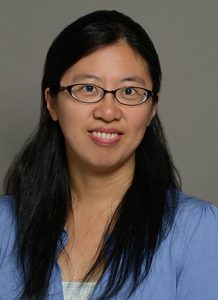May 08, 2020

Feng Wang
Families and individuals needing special restroom accommodations could have an easier time finding public bathrooms in the future, thanks to an app in development at Mizzou Engineering.
The app is expected to provide a user-friendly way to find family restrooms, restrooms with universal changing tables and unisex bathrooms.
RestroomMap.com, with support from the Missouri Disability Empowerment Foundation, is a website that helps people find bathrooms with special restroom accommodations. This past fall, creators approached Fang Wang, an assistant teaching professor in the Information Technology program, about developing an app.
“Inclusivity is very important to me, and I think that’s one of the reasons they came to me,” she said. “I felt like it’s a very meaningful project.”
RestroomMap.com relies on users to identify, locate and submit places that have family and unisex restrooms. Visitors to the site can see locations of restaurants, rest stops and other public spaces around the country that provide special restroom accommodations. The idea is to help those who need more than an ADA compliant restroom, such as families with older children in diapers, elderly couples who may need to assist opposite-gender spouses, people who need to lie down to bathroom and transgender or non-binary individuals who need safe, non-gender specific restrooms.
Although the app is in development, Wang said the project has already provided valuable lessons.
“When I talked to students about it, it had never entered our minds that this is a problem,” she said. “It’s been eye-opening.”
Wang is now reaching out to both graduate and undergraduate students to get a team together to design and develop the app.
Students in Mizzou Engineering’s IT program take classes that teach them the basics of building mobile applications. Early in their studies, students take foundational programming and database courses. Later, they can opt to take upper-level courses to learn how to design apps for both IOs and Android systems.
“They take a lot of courses that contribute to a project like this,” Wang said. “Here, they’ll have an opportunity to solve a real-world problem. We have a group of people who will test the app and tell us how to improve it.”
This type of hands-on experience will be invaluable to students when it’s time to apply for jobs, she said.
“Having your name associated with an app like this will open up a lot of opportunities,” Wang said. “It’s much bigger than a class project.”
She also hopes it shows young people how the technology they use personally can be adapted to have a broader impact.
“This type of app is something they can relate to in their daily lives,” Wang said. “Students have the skills—it’s just a matter of where they use them. This will plant a seed in students in terms of thinking how technology can be used for social good.”